They are all Meeras
Throbbing notes twanged out from a three-string kamaicha. Wood-ringed fingers tapped on a ghara. A sadhu with the longest dreadlocks sat like the sachem he was surrounded by attitude and subalterns and general onlookers including me. Thick wafts of grey-blue smoke rose from a smouldering chillum that briskly changed hands in the nippy morning. Sensuously draped eunuchs swirled in and out of the billowy screen singing paeans to Meera, the most devoted of the Krishna bhakts. Their raspy voices rose above the temple bells and ablutionary mantras that floated across the waters of the Pushkar Lake. The dance was frenetic, touching ecstatic peaks in its randomness. They had reached Pushkar after walking through the night from Merta, 60 km away. The Meera Temple in this ancient city – once known as Medantak – was where they began their walk.
“After we receive our blessings from the Maharaj, all of us will take a dip in the holy waters of the Pushkar Lake,” Padma told me. The Maharaj, the leader of the little group of sadhus, himself was getting ready for the day – tying his turban after bunching up his locks and applying a broad sindoor on his forehead. He gazed sternly at a pink pocket mirror. Looked up and nodded at the dancing eunuchs in approval, took deep drags from the chillum that came his way. A steel plate with a puja coconut and marigold flowers was kept before him with some currency notes and change. Those who were taking pictures were expected to contribute money. This money was later divvied among the eunuchs for food and bus fare.
Dance like Nagina
The Maharaj, fully clad in festival finery now, too joined them in their dance of devotion. Vibrant notes flowed from the sole-stringed tambura he held in one hand. Somewhere over the Pushkar Lake the chants and the notes met, mingled and resonated over the hovering Aravallis. Swans trumpeted with pleasure. More and more from the audience joined the swirling, twirling ones. Two Kalbelia women, dressed in black skirts and heavily brocaded blouses stood out with their lithe and graceful movements. A gypsy tribe from nearby Ajmer, the Kalbelias are known for their sensuous, snake-like movements. They have set up camp somewhere next to the seregrass plains flanking the Naga Pahar, or Snake Hill, Nalaram my guide had told me earlier.
Averse to public gaze, this fringe community prefers to hover around the periphery of events. It also had to do with their source of chief livelihood – dealing in snake venoms. The indifferent Wildlife Act of 1972 robbed them of a living and rendered them sitting ducks.
“Corrupt cops and exploitative authorities extract more than money from them,” Nalaram told me. “Remember Sridevi in ‘Nagina’?” He asked as we watched the motley group grow. I did. Who didn’t? The motions were fluidic and seductive; the sheen of velvety black did wonders around lush, robust curves. A heaving embonpoint where dreams lay buried. Later that evening at the base of the Naga Pahar, I came across their tents. They didn’t deal in snake venom anymore, a Kalbelia elder informed me. However, if I wanted, he could show me a cobra which they used for snake-charmer shows.
“Waste of time,” Nalaram told me. “It’s a defanged one.”
The disappearing Naga Pahar
Myths when flavoured become stuff of local legends. Pushkar owes its origin to Brahma himself, the first god in the Hindu triumvirate. The lake came up where the creator dropped his lotus flower. Brahma came down to earth and offered a sacrifice by its banks. In order to make his yagna, fire sacrifice, more powerful, he needed to have a woman by his side. For this he married a local tribal girl. Annually, worshippers flock to celebrate the anniversary of this event. What began as a pilgrimage, eventually developed into one of the world’s largest cattle, sheep, camel and horse trading fair. Besides fervent bargaining related to trade, distant relatives get together, maidens are courted, matches struck, and copious quantities of sweetmeat and food consumed. The ferry wheels, daredevil and freak shows, music concerts and competitions like turban tying and longest moustache lend added gaiety to the festive air.
Take it all in from the not-so prepossessing outcrop of the Naga Pahar. It is a quick trek up this hill separating Pushkar and Ajmer. Local lore goes that the hill is diminishing in size and one day will disappear totally. The good folk of both Pushkar and Ajmer attributes this as symbolic of the increasing need to unite Hindus and Muslims. Well-intended bokeh aside, the truth could be that the disappearance could be the result of scalding caused by rill erosion – which affects hills everywhere.
Flavoured local legends can become myths too.
Studs of Pushkar
Baadal pricked his ears. He seemed understandably intrigued by the haggling that went on in right earnest between his owner and potential buyers. For the reigning champion of equestrian events in Pushkar and some more in Punjab, the asking rate is five lakh rupees. Or half a million. Trading in studs has eclipsed the traditional cattle and camel commerce at the mela to the chagrin of some. Like Nalaram. “With that kind of money, one can buy several cows and open a small dairy farm,” he said. “And live tension-free.”
Nalaram should know a thing or two about apprehensive living as he is the sole breadwinner of his family. His father died when he was young leaving his mother and two sisters under his ward. He rents out camels from the seth and takes tourists around the fairground. Rest of the year, he hires out his service to till arid farmlands.
“I make around ten thousand rupees during tourist season,” he told me proudly. “After paying the seth four thousand rupees, I will have six thousand rupees left.”
In the long, blue evenings of autumn, when the moon begins to fatten for the brightest night of the year, the tribes start to move. (‘Pushkar’ by Hugh and Colleen Gantzer.)



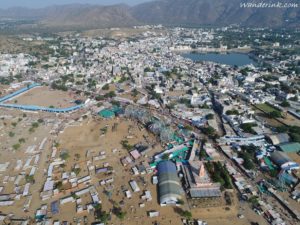
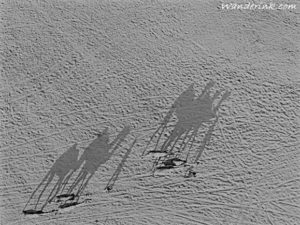
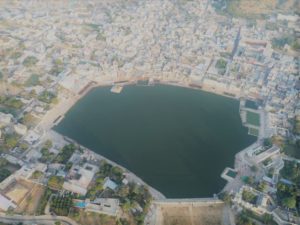
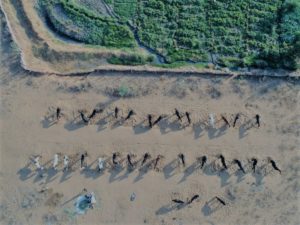
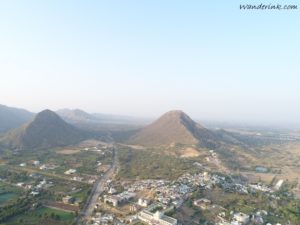









Nice article. Rajasthan is highly cultural rich state of India.
It is indeed. Thank you.
This is so well written. It felt like a book extract on a chapter called Pushkar. Could you please make your images bigger. That camel trotting shot was good, but because it was small, its significance dimmed a bit.
Thank you, Kartik. I have been told repeatedly the same about my images…but I keep it that way as my focus is on the writing, the images complement that. Thank you all the same!
The camel pic on desert is really admiring, i have seen earlier such picture which was an award winner. Rajasthan is itself so colorful and pushkar is one of best place of Rajasthan, you have jotted down the story well.
Thank you, Kundan.
Great post! i heard about Pushkar Mela and its glorious rural activities. This post makes us want to go Rajasthan and enjoy the perfect hospitality from the local villagers in pushkar Mela.
Thank you!
Go for it! The villagers here, like most locals elsewhere too, are fantastic!!
Being born and brought up in Ajmer, I must admit that I haven’t read such an immersing article on Pushkar in years. Great write-up and exceptional photographs.
Thank you very much, Mr Sharma. I am glad you liked the article and the photographs.
You have a great knowledge of this place and you wrote it well .
i also like this place i want to visit this place one more time…..